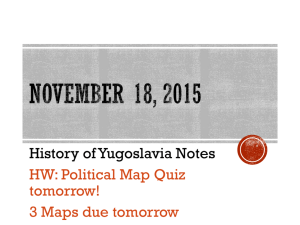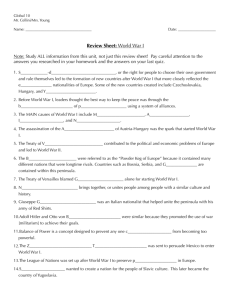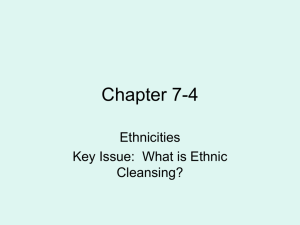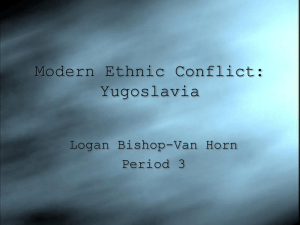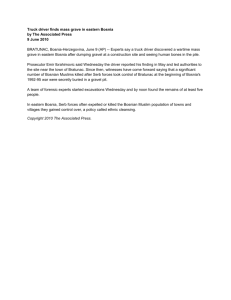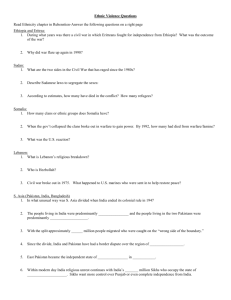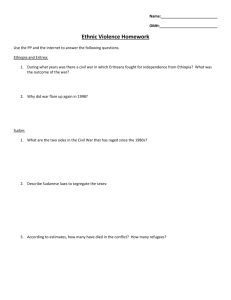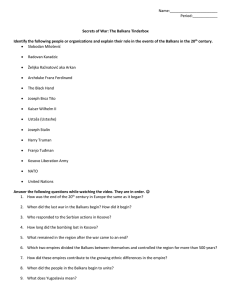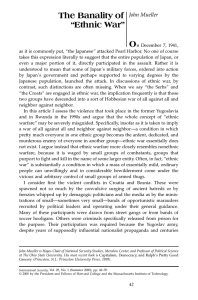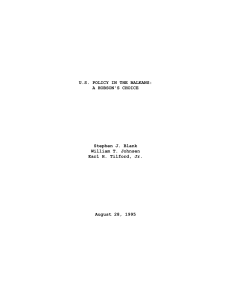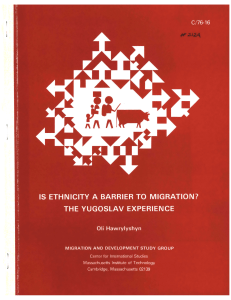The U.N. In Yugoslavia (1922)
advertisement
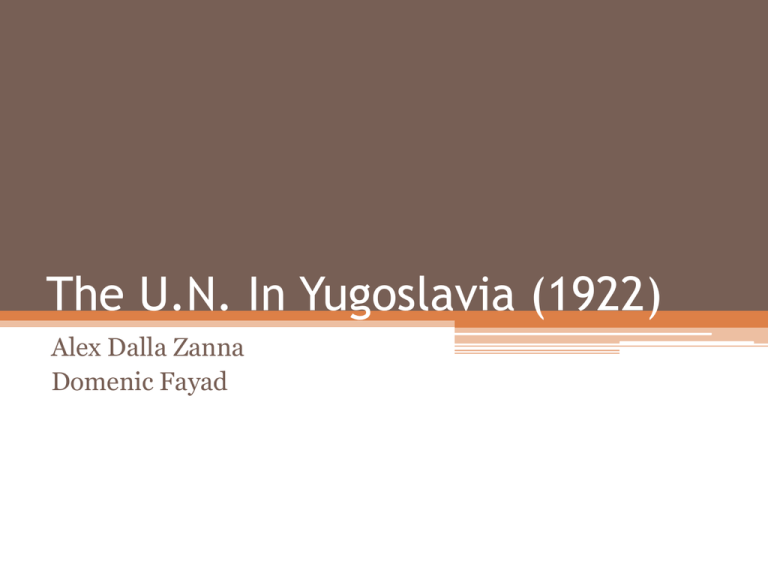
The U.N. In Yugoslavia (1922) Alex Dalla Zanna Domenic Fayad The Background • Yugoslavia was composed of 3 main ethnic who were historically known to have deep distrust/ tension with one another – the Serbs (Orthodox); the Croats (Catholic); and the Kosovars (Islamic). • Religious differences was a focal point of tension in the Western Part of the Balkans (Yugoslavia) and was even considered the capital of conflict between the Islamic and Christian throughout the century. • Ladder to the Communist era, the various ethnic groups broke away and formed independent states (Slovenia, Croatia, Bosnia) which led to civil wars where the goal was to drive out other ethnic groups by force – this came to be known as ethnic cleansing. Easy to read map of 1922 Yugoslavia (Highlighted regions). Slovenia & Croatia • Slovenia and Croatia both declared independence from Yugoslavia in 1991 as a result for their respective desire for ethnic separation – this was an issue to the Yugoslav gov’t because this meant that the minority Serb population would be very hard to protect. • In Slovenia, the process of separation was smooth with no harm done. However, in Croatia, this was not the case. • Croatia began to expel the Serbian population in 1995, and despite CDN Peacekeepers, an ethnic cleansing of the Serbians in Croatia was unfortunately successful. • In Bosnia, the desire for ethnic separation was evident as well, and led to many civil wars between the 3 main ethno – religious groups: the Serbs (Orthodox), the Bosnians (Muslims), and the Croats (Catholic). The Bosnian War • The UN peacekeeping mission classified as UNPROFOR, was sent and established in Sarajevo in 1992, as the fighting in Bosnia out broke 1992 and continued until 1995. • The original UN mission, UNPROFOR, was created to set up peacekeeping troops along the ceasefire line, but there was no peace to keep, as there was a full on civil war raging in Bosnia. UNPROFOR was then told to open ways for convoys to bring in food and medical supplies, by attempting to occupy the demilitarized area. • The UN peacekeepers were a majorly involved in ceasing the negative impact of the brutal civil war however, after some time, the areas considered to be “safe area” that were set up by the UN, had been destroyed by the Serbians. • CDN peacekeeping soldiers were attacked by the Croatians, but countered with a full - scale assault to regain control of the ceasefire zone. The Croatians, after murdering, raping and committing crimes of destruction against countless civilians of different ethnic groups, eventually left Bosnia. This peacekeeping mission in Bosnia later was referred to ask the worst battle involving CDNs since the end of the Korean War. The UN learned a key lesson from the war in Bosnia: peacekeeping is best carried out by combat – trained well equipped professional troops. The Bosnian War – CDN Participation • The Canadian role in the UN mission UNPROFOR in Bosnia was to carry out peace in an area where peace was nowhere to be found. • In 1998, Canada, as part of NATO, was involved in a first ever military operation against an independent country, and was engaged in a very controversial air strike against the Federal Republic of Yugoslavia. • As a result of the bombing, controversy questioning Canada’s role in the NATO, and the NATO’s role in the “new world order”. • The effectiveness of NATO was being questioned by the world through their failure to bring peace in Yugoslavia and several other conflicts at the time. • Still an Issue? Yes as over 1,650 Canadian peacekeepers are still present in Bosnia over this conflict. Bibliography Pearson’s Counterpoints 11 E – Text Socials 11 Work Book Wikipedia – Yugslavia 1992 Google Images
